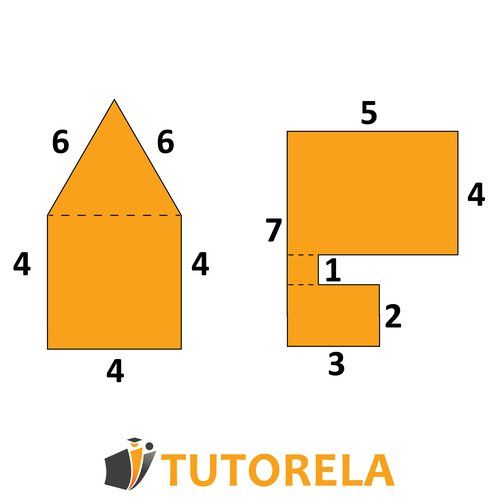When students hear the words "compound shapes", they usually feel uncomfortable. Just before you also ask yourself: "Oh, why this again?", you should be aware that there is no real reason. Describing shapes as compound doesn't really make them so. As it turns out calculating areas and perimeters of compound shapes is in fact relatively straightforward.
Area of Rectangle & Complex Shapes Practice Problems
Master rectangle area calculations and decompose complex shapes into familiar rectangles. Practice with step-by-step examples and build confidence solving geometry problems.
- Calculate rectangle area using length × width formula
- Decompose complex shapes into familiar rectangles
- Apply rectangle properties to find missing dimensions
- Add and subtract rectangle areas in composite shapes
- Solve real-world rectangle area word problems
- Master the puzzle method for complex shape areas
Understanding Area of a Rectangle
How do we calculate the area of complex shapes?
You will be introduced to Complex shapes only after you learn various shapes in geometry. The reason these shapes are complex is due to the fact that they are slightly different from those you've come to know. In each complex shape, additional shapes that you need to identify are hidden. Dividing the complex shape into several different (and familiar) shapes will allow you to answer the question of how to calculate the area of complex shapes.
The trick: extract a familiar shape from within the complex shape
So how do we answer the question of how to calculate the area of complex shapes? First, you need to identify familiar shapes within the complex shape. An example of this: a rectangle. As you know, each shape has properties that you are familiar with, so within the complex shape itself, you can apply the properties of the familiar shape and thus calculate areas and perimeters.
After completing the missing data (according to the properties of each shape, for example: rectangle), you can complete the "puzzle", identify additional data that is revealed to you, and thus calculate the area of the complex shape. When calculating the area of complex shapes, you will often need to perform simple arithmetic operations such as division and addition (mainly for sides in the shape) - all based on the unique properties of each shape.

Practice Area of a Rectangle
Given the following rectangle:
Find the area of the rectangle.
Examples with solutions for Area of a Rectangle
Calculate the area of the parallelogram according to the data in the diagram.
We know that ABCD is a parallelogram. According to the properties of parallelograms, each pair of opposite sides are equal and parallel.
Therefore:
We will calculate the area of the parallelogram using the formula of side multiplied by the height drawn from that side, so the area of the parallelogram is equal to:
Answer:
70
Calculate the area of the right triangle below:
Due to the fact that AB is perpendicular to BC and forms a 90-degree angle,
it can be argued that AB is the height of the triangle.
Hence we can calculate the area as follows:
Answer:
24 cm²
ABDC is a deltoid.
AB = BD
DC = CA
AD = 12 cm
CB = 16 cm
Calculate the area of the deltoid.
First, let's recall the formula for the area of a rhombus:
(Diagonal 1 * Diagonal 2) divided by 2
Now we will substitute the known data into the formula, giving us the answer:
(12*16)/2
192/2=
96
Answer:
96 cm²
Calculate the area of the triangle ABC using the data in the figure.
First, let's remember the formula for the area of a triangle:
(the side * the height that descends to the side) /2
In the question, we have three pieces of data, but one of them is redundant!
We only have one height, the line that forms a 90-degree angle - AD,
The side to which the height descends is CB,
Therefore, we can use them in our calculation:
Answer:
36 cm²
The trapezoid ABCD is shown below.
AB = 2.5 cm
DC = 4 cm
Height (h) = 6 cm
Calculate the area of the trapezoid.
First, let's remind ourselves of the formula for the area of a trapezoid:
We substitute the given values into the formula:
(2.5+4)*6 =
6.5*6=
39/2 =
19.5
Answer: